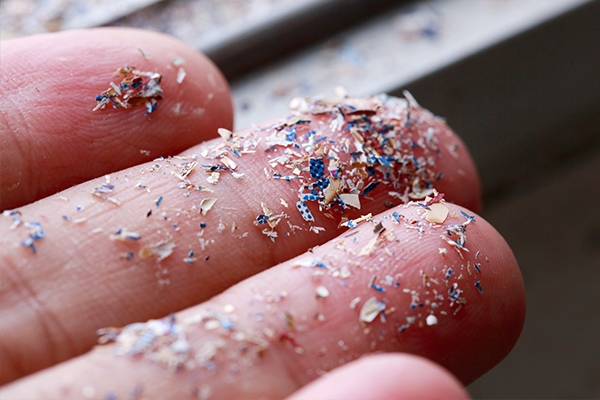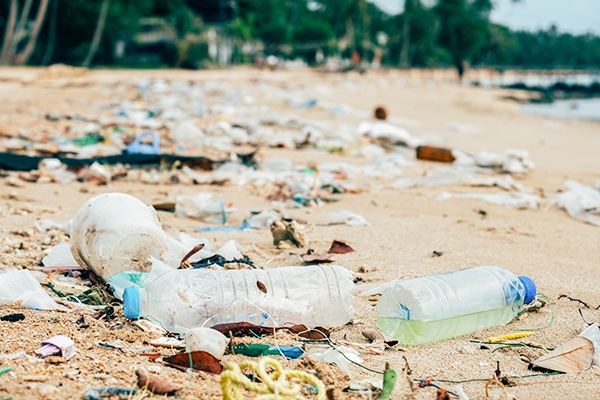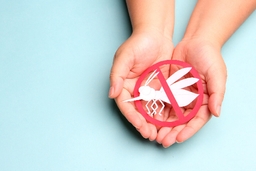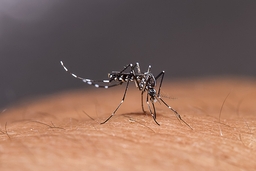How Microplastic Endangers Our Lives

A 2019 study by Environmental Science and Technology stated that every liter of bottled water contains 100 microplastic particles. These are the most common microplastics that people have consumed.
Plastic and microplastics are inextricably linked to human life. However, their negative effects are becoming an increasingly real issue that has now become a global environmental problem.
According to the United Nations Environment Programme's (UNEP) 2021 report, plastic production in 2017 reached 438 million tons. Only 12% of this total was burned, with the remaining 9% recycled. Where did the rest of them go? It ended up as waste in the environment, including the oceans.
If nothing is done, the amount of plastic entering the aquatic ecosystem will nearly triple, from 11 million tons in 2016 to 29 million tons in 2024. Isn't it amazing?
What exactly is microplastic?
Microplastics are small plastic pieces less than five millimeters in size. They contain hazardous chemicals such as polychlorinated biphenyls (PCBs), an organic pollutant. Microplastics are toxic and persistent. They can pollute the environment and accumulate in the food chain.
Microplastics can be found in a variety of products, including textiles, cigarette filters, and microbeads used in various health and beauty products. Unfortunately, these microscopic waste particles have found their way into a variety of environments, including oceans, freshwater, air, and soil.
Based on UNEP research, long-term use of some of these products increases microplastic accumulation in the environment. It is anticipated that it will reach 3 million tons per year.
The Hazards of Microplastics

Microplastic waste endangers both the environment and human health. If no efforts are made to reduce it, plastic waste will outnumber fish by 2050.
The following are the consequences of microplastic waste on life:
1. Marine animals
Fish and other sea animals can consume microplastics. This can result in health issues and even death. In some cases, microplastics penetrate tissues and cause organ damage in marine animals.
Microplastics can build up in the digestive systems of plastic-consuming animals such as fish and shellfish. Since eating them can be hazardous to your health, you must thoroughly clean the fish's stomach before cooking it. However, this does not apply to some small-sized fish, such as sardines, anchovies, and some freshwater fish, which must be consumed whole.
Several studies have found that shellfish have the highest microplastic content, with 4 particles per gram. This means that 250 grams of shellfish contains 1,000 microplastic particles.
2. Human health
Microplastics have been discovered in a variety of foods and beverages, including drinking water and salt. The Plastic Health Coalition states that plastic waste has three effects on human health: food, drink, and inhaled air. Cancer, infertility, neurological developmental disorders, and infections are all caused by the chemicals in them.
UNEP reported the serious effects of microplastics on women's health in 2021. Brain development, respiration, and other health issues are all closely related to genetic changes in humans.
3. Environment
Microplastics pollute water, soil, and air, causing ecosystem damage and disrupting natural balance. Wind-borne microplastics have the potential to contaminate the air and enter the human respiratory system.
Various types of microplastics

1. Cigarette filters
Microplastics are found in cellulose acetate fibers, which make up the majority of cigarette filters. One billion smokers worldwide consume approximately six trillion cigarettes per year.
It's not surprising that cigarette butts are the most common type of plastic waste found on beaches. Cigarettes emit microplastics, heavy metals, and other chemicals that have an impact on human health and ecosystem services.
2. Clothing and textiles
Plastic is found in approximately 60% of clothing materials, including polyester, acrylic, and nylon. When washed or worn, clothing and textiles made from these materials emit microplastics or microfibers.
Based on a 2020 UNEP report that maps the global textile value chain, other clothing and textiles account for about 9% of microplastics in the ocean. It is recommended to buy clothing made from natural materials to reduce or eliminate the threat of microplastic leakage. Despite the fact that this may have other environmental consequences.
3. Cosmetics
Cosmetics and personal care products contain primary microplastics or microbeads that are too small to detect. These materials were purposefully created and applied to add texture. Plastic particles in products ranging from hand sanitizers and soaps to toothpaste and deodorant can be absorbed by the skin.
Some cosmetics, such as lipstick and lip balm, are even edible. Some skin exfoliating products contain more than 10% microbeads. These items are included because of their scrubbing ability.
Because microbeads are so small, they cannot be filtered in wastewater treatment. They are also difficult, if not impossible, to biodegrade.
Joint declaration

The Plastic Soup Foundation has launched an anti-microbead campaign. The campaign was launched in response to the discovery of 138 brands of hand sanitizer, 83% of which contained microplastics.
In the United States, Illinois was the first state to pass legislation prohibiting the manufacture and sale of microbead-containing products. This prohibition has been in effect since 2018 and 2019.
According to UNEP's Global Chemicals Outlook II report, a significant amount of microplastics from cosmetics and other sources enter wastewater in areas with inadequate wastewater treatment facilities.
This waste eventually makes its way to the ocean, where it causes pollution. To limit potential exposure to microplastics, it is advised to check the list of ingredients before purchasing products.
Did you know that the countries that contribute the most plastic waste to the ocean are not necessarily those that use the most plastic, but rather those with longer coastlines, high rainfall, and ineffective waste management systems? These nations dump their waste into the sea.
According to a 2021 study by Meijer et al., Indonesia ranks fifth in the world as the largest contributor to plastic waste in the ocean.
The Netherlands, Austria, Luxembourg, Belgium, and Sweden have joined forces to call for the elimination of microplastics from personal care products.
This action aims to protect the marine ecosystem and marine animals like clams from pollution. The joint declaration, which was sent to 28 EU environment ministers, demanded that microplastics be removed from cosmetic and detergent products.
Microplastics, like plastic, are thought to degrade. It can take hundreds or even thousands of years for them to decompose completely.
Therefore, let's reduce microplastic waste. One method is to replace microplastics-containing goods with those made of more environmentally friendly materials.
If you have symptoms of poisoning from accidentally consuming microplastics, click on WhatsApp or visit GWS Medika Clinic.



